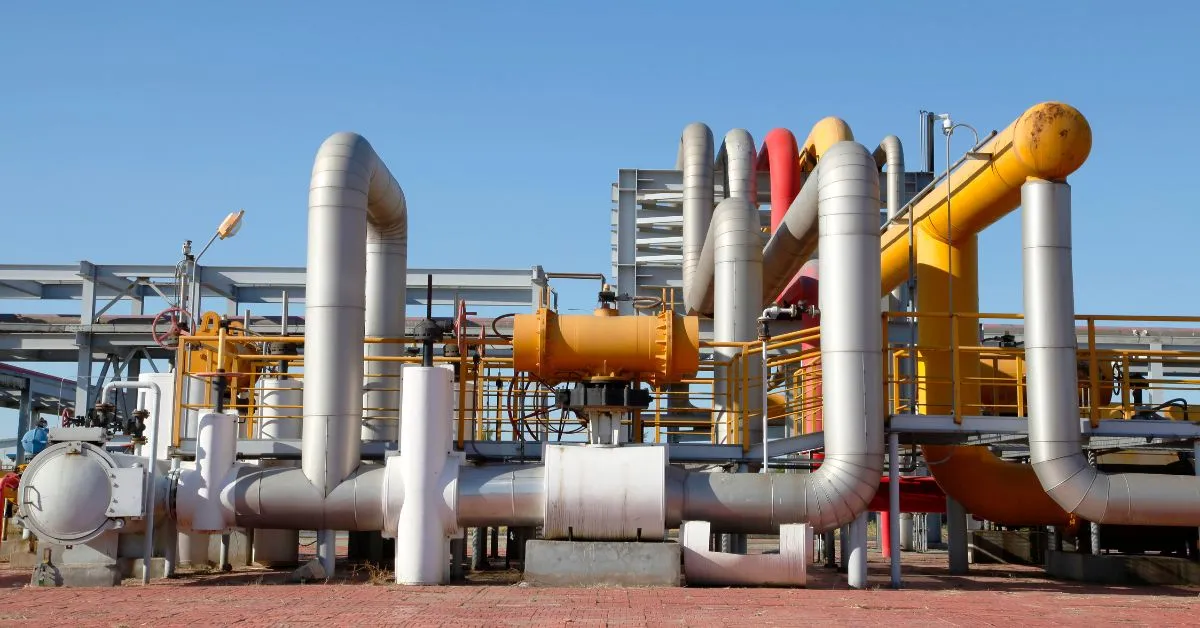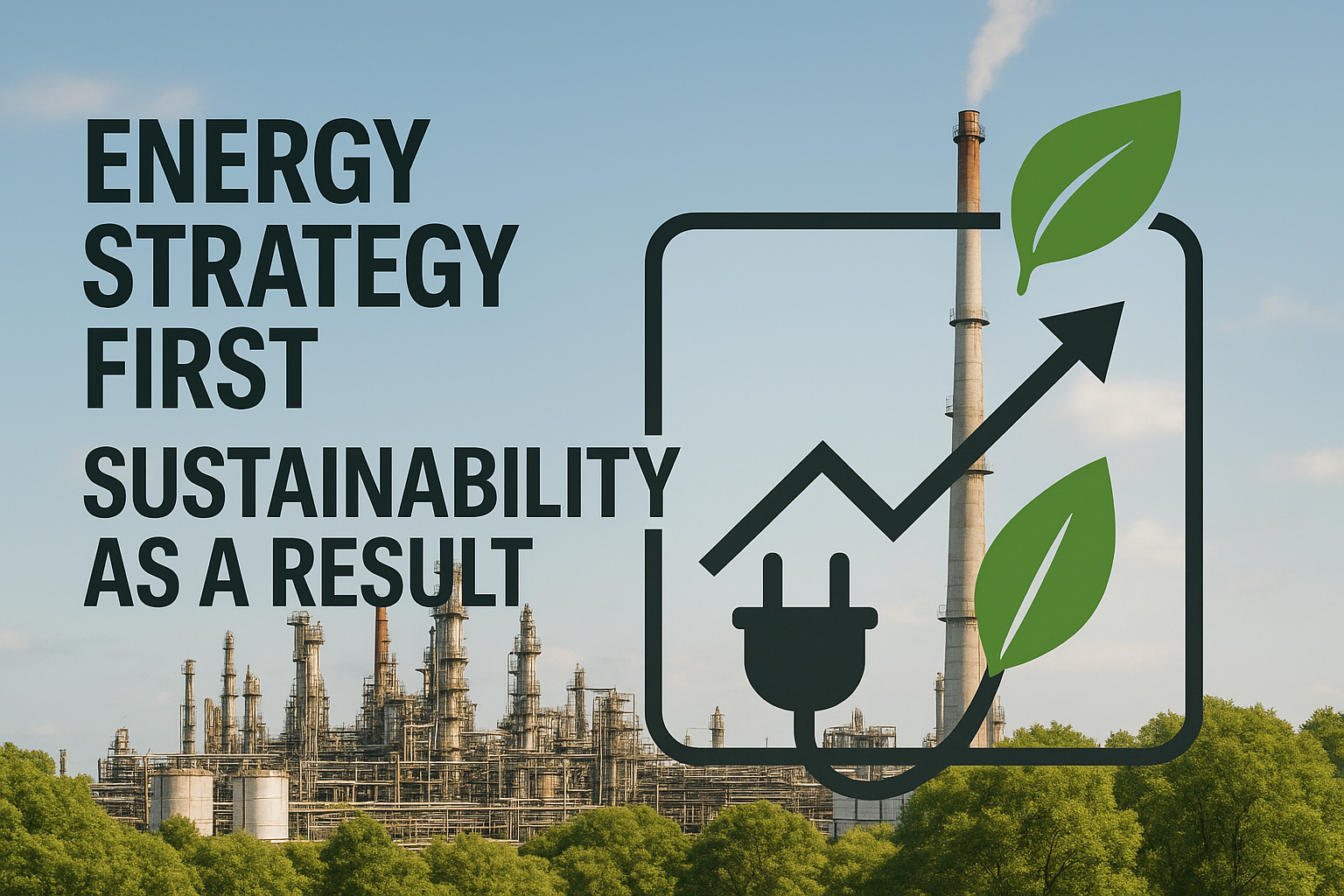Volatile feedstock prices, rising energy costs, and tightening sustainability mandates are steadily eroding the operating margins that once protected process plants from inefficiencies. Today, where every cent affects profitability, quality, and yield, giveaway can drain up to 50% of your bottom line.
Advanced AI solutions address these challenges by dynamically adapting to changing market conditions and eliminating communication barriers between operations and planning teams. These technologies deliver measurable yield improvements of 1-3% while reducing energy waste, which often represents the most significant operational expense in processing systems.
The six steps that follow outline a practical roadmap to help you defend profitability despite relentless market pressure.
Step 1: Assess Your Process Optimization Landscape
Assemble a cross-functional team from operations, engineering, planning, and finance to evaluate your plant comprehensively. Create an AI-readiness scorecard for each unit that measures operational volatility, energy consumption, off-spec frequency, and potential EBITDA impact per improvement point. Units with high variability, significant energy usage, and frequent quality issues offer the strongest optimization potential.
As you collect baseline data, three common traps can derail your assessment: patchy data histories that distort true variability, scope creep that drags scarce resources into low-value studies, and ignoring workforce readiness; operators must trust the model they will later oversee.
With reliable input, rank opportunities by an impact-to-effort ratio. A unit promising a large economic lift but requiring modest integration effort should outrank a technically intriguing but low-margin target. This disciplined approach keeps your AI journey focused on improvements that can move the bottom line fastest.
Step 2: Establish the Data Foundation for AI-Driven Optimization
While richer, cleaner datasets sharpen results, plants can begin AI-powered optimization with existing facility data, improving infrastructure in parallel as benefits accrue. Most operations already have the foundational information needed: historian tags, sample results, and business databases, but these sources rarely communicate effectively.
Every optimization project consolidates these data streams into a unified pipeline through three core phases:
- Data Transfer: Maps raw signals and sample results to a common time base, creating the foundation for consistent analysis
- Data Analysis: Identifies gaps, outliers, and sensor drift using advanced algorithms that can fill missing values and highlight faulty readings through redundant instrument comparisons
- Data Validation: Brings subject-matter experts into the loop to confirm that processed information still reflects real operational behavior and constraints
This structured approach addresses data quality concerns without delaying progress. Industrial AI platforms can learn from existing historical baselines and continuously improve accuracy as more reliable information becomes available.
Process industry leaders recognize that many complex plants need ongoing data improvements, but waiting for perfect conditions delays value creation. When a solid foundation is established, AI models can analyze information in real time, delivering early energy and yield improvements while data quality continues to mature.
Step 3: Deploy Predictive AI Models That Learn Your Process
Closed Loop AI Optimization begins with your plant data, layers on fundamental constraints, and then lets reinforcement learning (RL) explore millions of “what-if” scenarios in a virtual environment. The resulting Foundation Model—a living representation of your units—continually learns as feed quality, equipment health, and market conditions evolve, sharpening its recommendations every cycle.
The model detects subtle drifts in temperature or composition long before they appear in sample results and automatically nudges setpoints to keep conversions on target. This real-time yield maximization delivers the improvements many sites record across their operations.
The same intelligence attacks energy spending with precision. Because the model spans interconnected units, it prevents local tweaks that create downstream waste. Coordinating every contributor to a product pool minimizes quality deviations while extracting more value from every barrel or tonne handled.
Step 4: Build Confidence Through Advisory Mode
In advisory mode, the Closed Loop AI solution stays open loop: it calculates optimal setpoints, but you decide whether to accept them. This buffer lets front-line operations explore AI guidance without giving up control; a useful bridge when skilled-worker availability is tight and processes remain highly variable.
Every accepted or rejected suggestion becomes feedback. The model sharpens its reinforcement learning (RL) policy, and operators watch how each move affects yield, energy use, and stability. Plant readiness checklists can help capture KPIs such as margin per hour, energy intensity, and off-spec percentage against a recent baseline to quantify improvements for leadership.
Quick wins can arrive fast: sites deploying advisory trials report significant reductions in natural-gas demand, trimming fuel costs while validating the model’s logic. When numbers like these appear in daily shift reports, organizational buy-in follows, and the path toward autonomous control feels far less risky.
Step 5: Transition to Autonomous Closed-Loop Control
Moving from advisory mode to full closed-loop begins with governance. A robust change management review confirms that every new control action fits existing operating windows. Safety parameters must be hard-coded, while watchdog protocols continuously verify controller health and trigger fallback logic if anomalies appear.
Once these guardrails are in place, autonomous operation delivers distinct advantages. A reinforcement learning engine can adjust setpoints in real time, responding to disturbances far faster than manual intervention.
Human expertise remains essential. Operators monitor performance dashboards, override when necessary, and feed operational context back into the model. This collaborative decision-making process maximizes both human judgment and AI capabilities. Transparent constraint visualization and clear economic accounting help ease concerns about automation, ensuring that safety and trust grow alongside profitability.
Step 6: Scale Optimization Across Your Asset Base
Once your first closed-loop solution proves its value, you can replicate that success across similar units without starting from scratch. The Foundation Model at the core of advanced industrial AI platforms learns relationships that remain valid for comparable units, so copying the model becomes a matter of mapping tags and fine-tuning constraints, a task that typically takes weeks rather than months for subsequent deployments.
Transferring a model to units running different feeds or chemistry requires an extra calibration step. A short operational history—typically a few production cycles—allows the model to re-weight variables until predicted and actual behavior align. Because the model continues learning in real time, it adapts as raw-material properties or market demands shift.
To prevent scaling efforts from overwhelming resources, many operators establish a center of excellence for AI technology where controls specialists, engineers, and economic analysts maintain master models, curate dashboards, and guide continuous improvement across sites.
Effective expansion prioritizes units with the highest EBITDA impact potential, serviceable data quality, and demonstrated team readiness. It balances technical feasibility with rapid economic payoff while ensuring knowledge sharing between facilities transforms early momentum into a sustainable, enterprise-wide program.
The Culture Factor: Human-AI Collaboration Determines Success
Shrinking workforces and climbing complexity make culture—not algorithms—the gatekeeper of successful implementation. Skilled-worker gaps remain among the hardest roles to fill, a shortfall that new technology, such as closed-loop AI, is increasingly being used to help address. Staff may worry about job security or distrust the decision-making logic they can’t see.
Modern industrial AI can address those concerns by learning from your plant data while surfacing its reasoning in clear dashboards. Operators can replay past events, test what-if scenarios, and capture decades of tacit knowledge before experts retire. Advanced leaders already use similar approaches to upskill teams and boost productivity.
Successful adoption typically follows three proven strategies:
- Early wins start with a high-visibility application that lets operators compare AI recommendations with their intuition.
- Transparent metrics publish energy, yield, and quality results every shift, so trust can grow with proof.
- Continuous upskilling pairs intuitive dashboards with structured training to help junior staff become confident optimizers.
Position AI as a coach rather than a replacement, and cultural resistance can fade while margin improvements scale across your entire operation.
How Imubit Enables AI-Enhanced Operating Strategy
Shrinking spreads demand sharper operating decisions. The Imubit Platform applies AI that can consistently lift refinery margins by $0.25 per barrel, raise yields 1–3 percent, and trim natural-gas use up to 30 percent in energy-intensive units. These improvements flow directly from the six-step roadmap outlined above, but Imubit shortens the path to value with a structured, zero-risk engagement.
Implementation begins with an Optimization Workshop to identify high-impact opportunities, followed by Scoping and Design to define applications based on your specific constraints. Data Transfer and Analysis builds the foundation using your existing data, while the Modeling phase develops AI tailored to your operations. Finally, Economic Validation and Executive Review prove the business case before any operational changes.
Each stage builds confidence while protecting existing operations. More than 100 autonomous applications are already running in plants operated by seven of the ten largest U.S. refiners, proving that the platform scales across complex, multi-unit systems.
Leaders ready to protect margins and emissions simultaneously can get started with a complimentary Plant Assessment to identify the highest-value opportunities within their specific operations.




